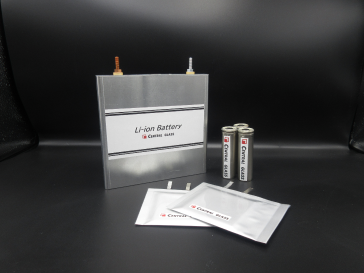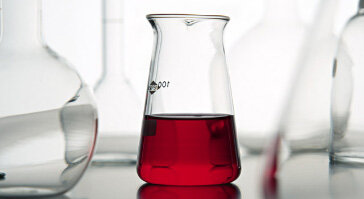R&D
Contributing to the performance improvement of lithium-ion batteries by utilizing fluorine chemistry, one of the strengths of Central Glass.
-
Article categories:
- Energy
-
Related businesses:
- Energy Materials
- Social issue
- Environmental and energy problems
- Central Glass's engagement
- Research & development and commercialization of battery electrolytes for environmental products
The world is facing increasingly challenging environmental problems, including global warming and other issues. It is widely hoped that eco-cars such as electric and hybrid vehicles will help provide a solution to these issues.
These products use lithium-ion batteries. The following is an introduction of Central Glass electrolyte technologies used in these materials.
Background to Development
It was in 1988, just before lithium-ion batteries came onto the market, and Central Glass was searching for ways to make use of our unique skills in fluorine chemistry. It was then that we zeroed in on the fluorine compounds that are used in battery materials and launched our research activities in battery technology.
Home video cameras really started to take off in the late 1980s. That was when Central Glass used its fluorine technology to begin the production of small laboratory-scale quantities of the highly-pure electrolytes that are used in lithium-ion batteries for video cameras.
In the late 1990s, against a backdrop of increasingly serious environmental challenges, regulations became more stringent and electric vehicles began appearing in showrooms and on the roads. The R&D efforts for Central Glass's battery technology were no longer limited to mobile electronic devices; the technology has more and more found applications in the automotive market, as well, and as a consequence the company has increasingly moved in that direction.
Our R&D efforts have traveled a long road. After much trial and error, in 2008 we established an innovative method for the production of electrolyte. At the same time, we have succeeded in developing new additives that significantly improve battery performance.

Challenges in Development
Battery electrolyte is produced by mixing lithium hexafluorophosphate (LiPF6), organic solvents, and additives. The LiPF6 is a fluorine compound containing lithium that plays the role of transporting lithium ions. In and of itself, LiPF6 has poor thermal stability. It was said that battery performance would improve if a stable lithium-containing fluorine compound could be found.
Central Glass's R&D people began the search for high-performance electrolyte substitute. We tried synthesizing all sorts of lithium-containing fluorine compounds, but found that the battery characteristics of some ingredients were inadequate, while other ingredients were too costly. Our development efforts had reached a dead end, and we were unable to find a suitable substitute.

Finding the Solution
We tested many different compounds in our search to find a replacement for LiPF6. Eventually, we achieved a major breakthrough in battery performance by using LiPF6 with an additive. This achievement led to Central Glass's development of our proprietary high-performance additives.
Keys to Success
Development of High-Performance Additives
Today, Central Glass optimizes the types and quantities of additives for each customer. We make recommendations tailored to individual customer requirements when we sell our electrolytes. We are able to develop high-performance electrolytes by synthesizing a wide range of compounds and accumulating knowledge in the R&D phase. This process has become vital to providing our customers with innovative electrolytes that meet their specific needs.
Our Corporate Culture Recognizes the Importance of the Autonomy of Our Scientists
The stubborn persistence of Central Glass scientists has been a critical factor underlying our success in this process. Another factor is the Central Glass corporate culture: Ours is a company where a scientist who is determined to pursue a particular avenue of research is strongly encouraged to do just that. When Central Glass began these development efforts, we had no idea if this battery technology could in fact be commercialized. We didn’t know there might be some business opportunities here, but we respected the autonomy of our younger researchers in the work they were doing in-house. They continued this work in an environment that fosters the kind of communication that is unimpeded by barriers of seniority or what department a person belongs to. And that, we believe, is the key to the success of our development efforts.
